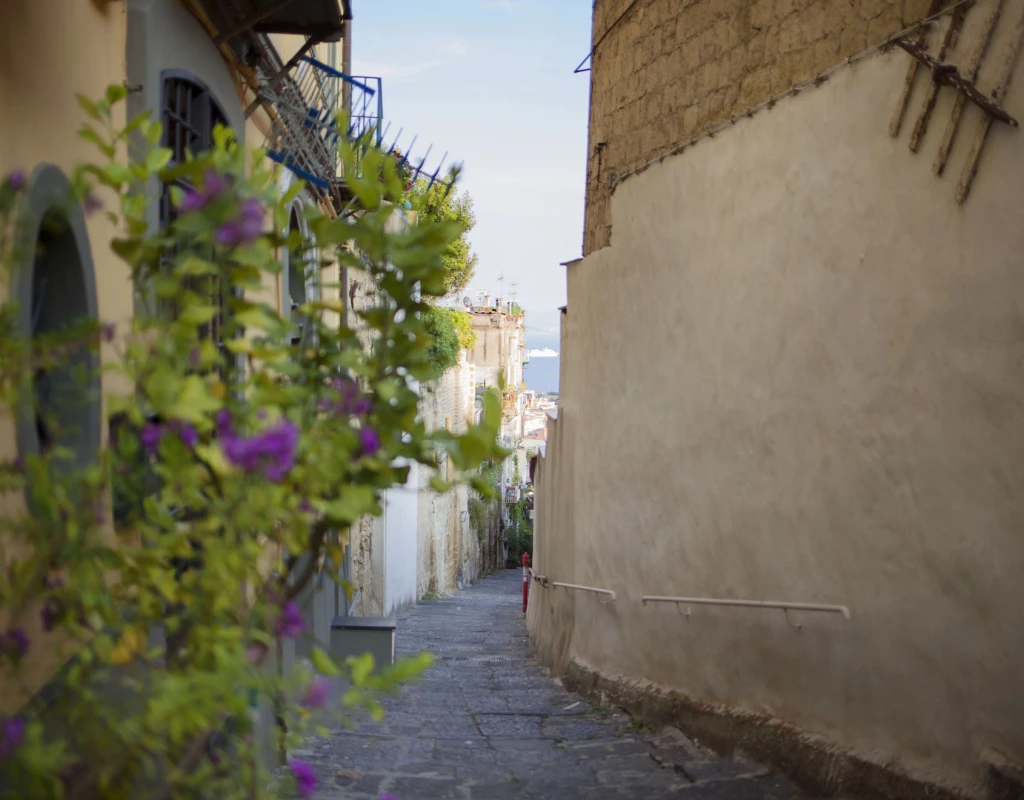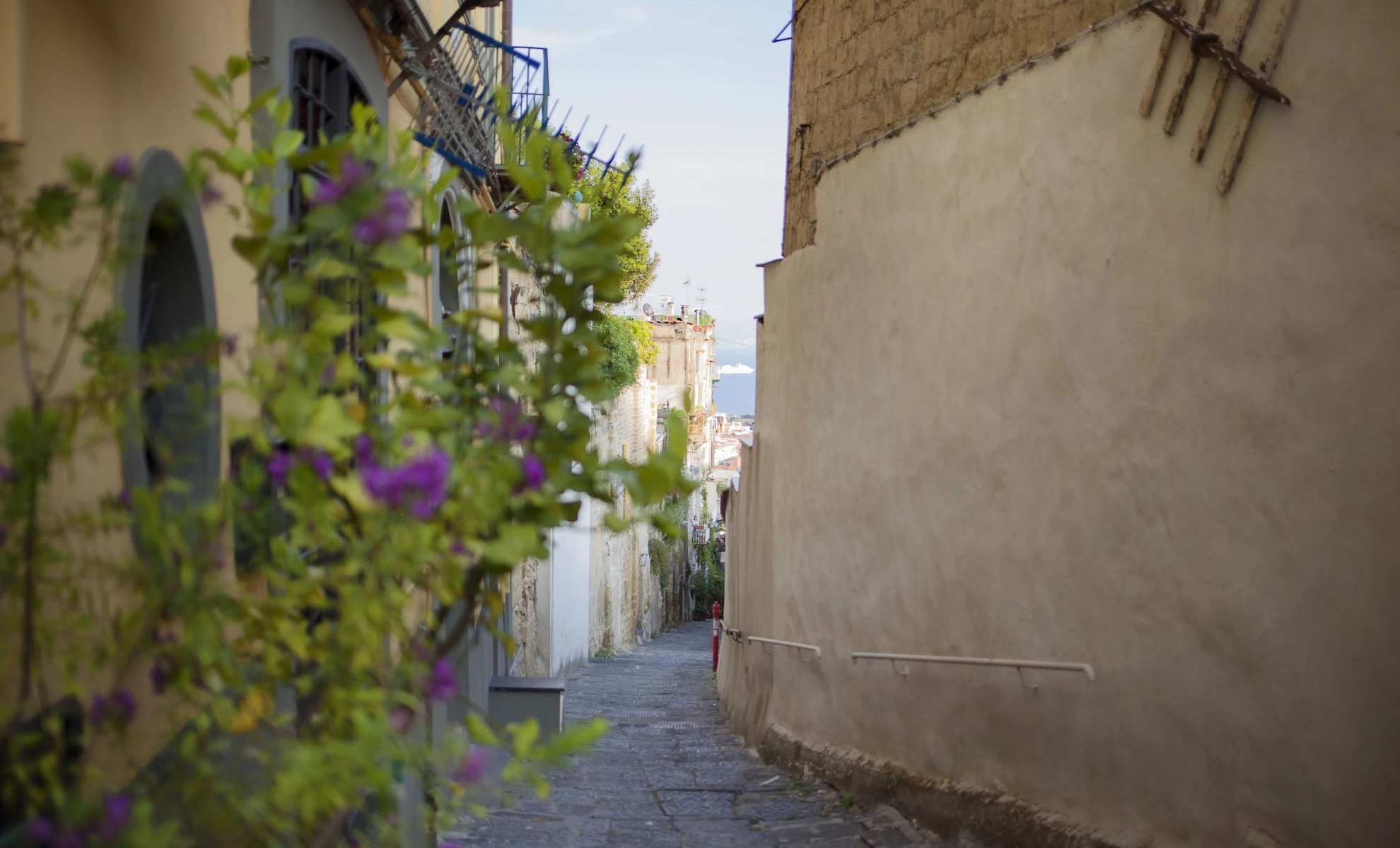This narrow and colored street, made of stairs, which cuts out a portion of the sky with Vesuvius, the villages on its slopes, the Sorrento Peninsula, was called once Imbrecciata del Petraio.
Ph. Machi di Pace - Trentaremi

The floor made of vrecce, that is of pebbles, forms a long series of steps that connect the upper part of the city, the Vomero, to the lower part, the Corso Vittorio Emanuele. From Su Napoli (Uptown Naples), through the Imbrecciata del Petraio you get to Giù Napoli (Downtown Naples), as locals say, up to the steps of Santa Maria Apparente.
But this was also the Lavannare neighborhood in ancient times. The women in Santa Maria Apparente used to wash clothes by hand in wash houses, taking water in fountains, and they inspired one of the oldest Neapolitan songs: “Il canto delle lavandaie del Vomero” (“The song of the laundresses of Vomero”). Naples is all like this: stairs, stairways, rises, hills, buildings that end up on other roads. It is the “vertical city”, as Edoardo Bennato sings.
Ph. Machi di Pace - Trentaremi
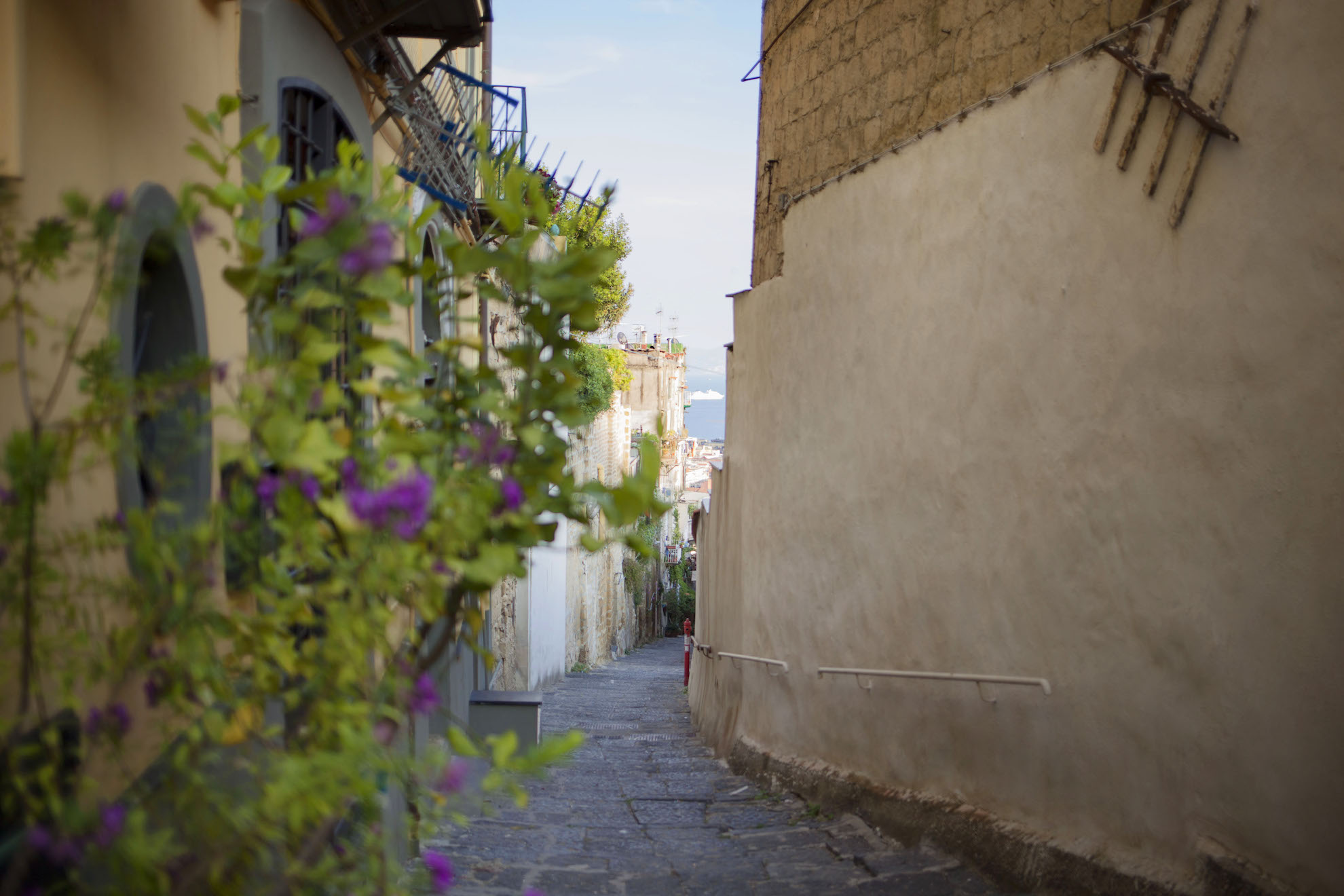
The stairs of Petraio are not signaled, you need to know them or look for them in the streets of San Martino, behind the funicolar railway of Via Morghen. Perhaps it is this secrecy that protects them from the chaos, the horns, from the gray uniformity of globalization.
The Petraio is an explosion of life and colors. Here the small balconies smell of fresh flowers, the Liberty style buildings color the landscape of red, yellow, ochre, the brown of the bricks. The sheets put to dry in the sun give off the unmistakable scent of fresh washing laundry. You can breath the Mediterranean in the intense smell of lemon trees along the stairs.
Ph. Machi di Pace - Trentaremi
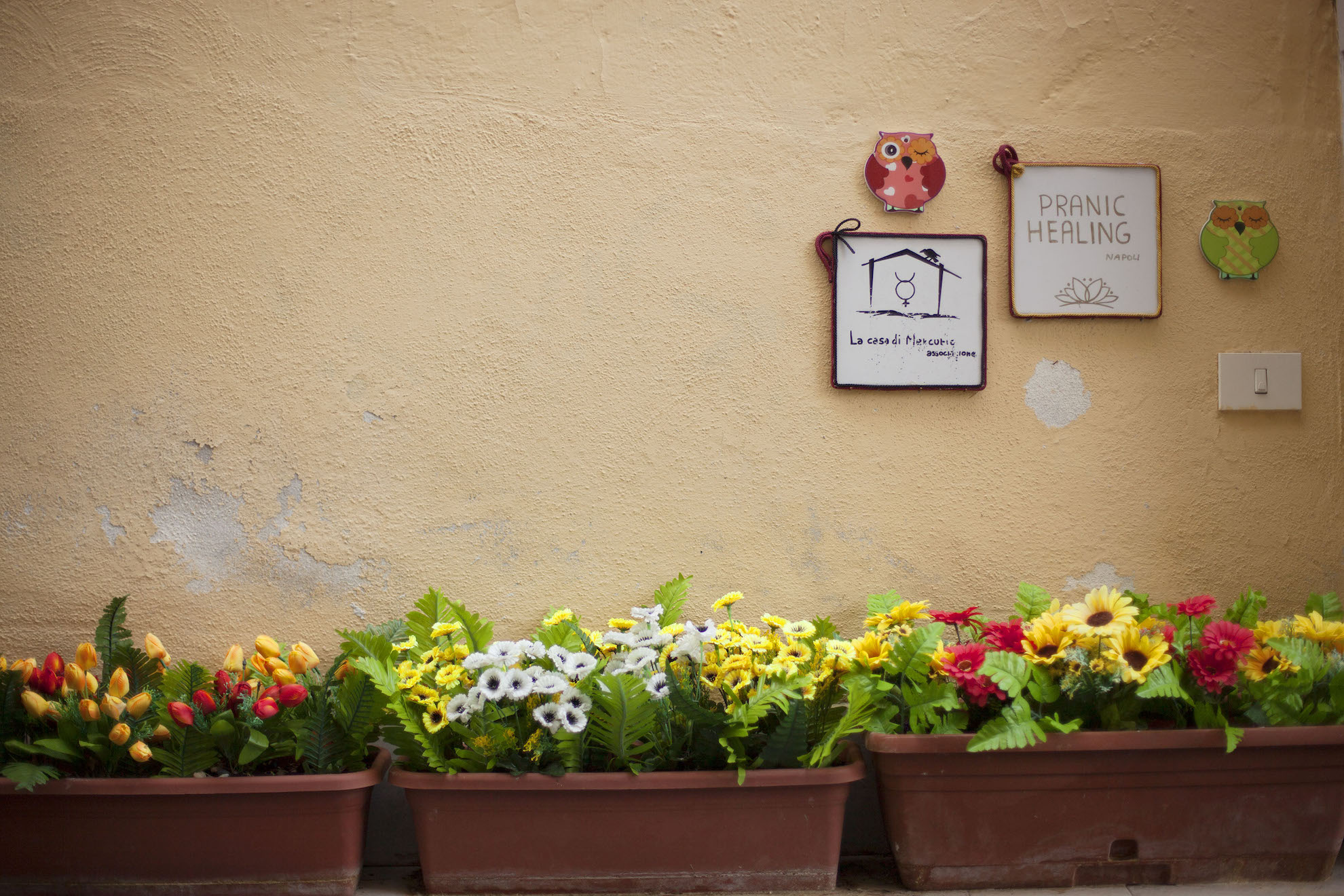
The name Petraio today derives from the word “petraro” (heap of stones) because this steep place abounded with pebbles and other stones and therefore had an extremely rocky nature, as Raffaele D’Ambra wrote in a Neapolitan-Tuscan vocabulary in 1873.
The village of Petraio is full of light. So beautiful that in past centuries it was considered a holiday resort and many artists chose it as a buen retiro or as a place to find peace and relaxation.
Ph. Machi di Pace - Trentaremi
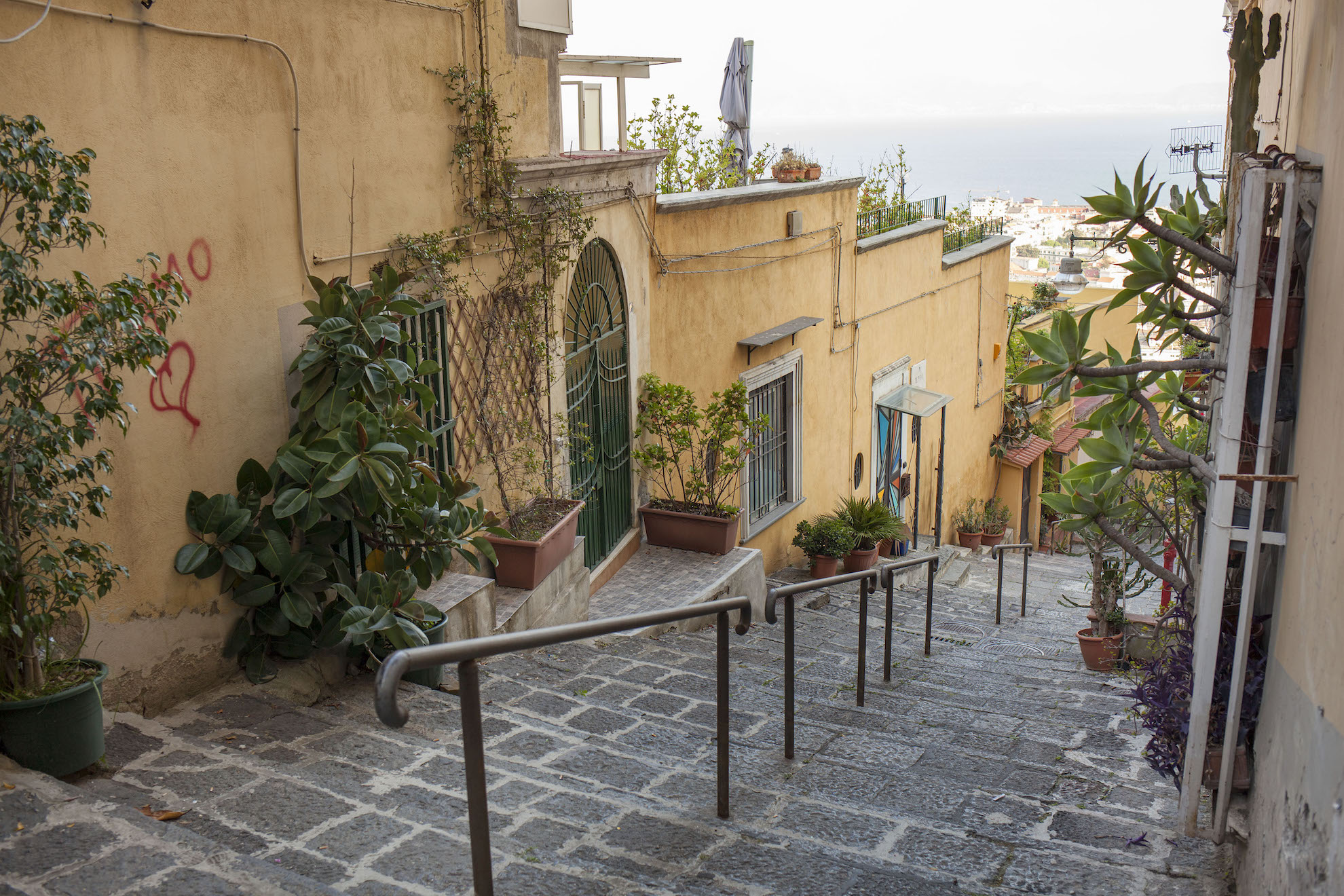
The Swiss painter Paul Klee, for example, as Vittorio del Tufo tells in the book “Trentaremi”, spent the Easter of 1902 at Petraio and was struck by it. “Naples has the greatest splendor alongside the greatest misery. Port life, carriage course, high level opera theater. A paradisiacal and incomparable nature… a placid inlet, framed by strange mountains and closed by characteristic islands. And all of this I can see from the balcony of my room. At my feet, like a giant amphitheater, lies the marvelous city with its buzz”.
The village of Petraio with its slow shouting and that human and intimate dimension typical of small hamlets, is an escape from the city while remaining in the city.
